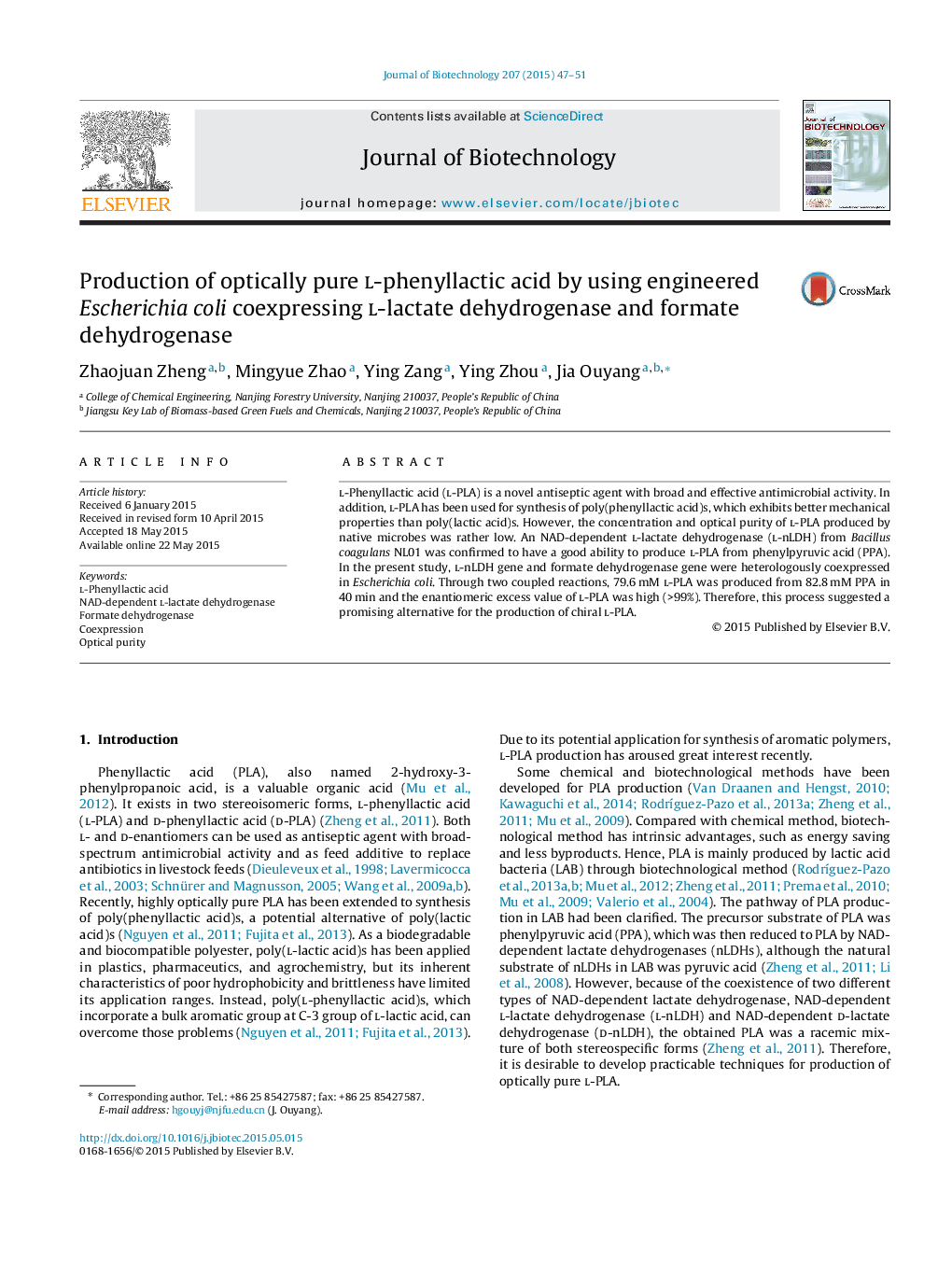| Article ID | Journal | Published Year | Pages | File Type |
|---|---|---|---|---|
| 6491076 | Journal of Biotechnology | 2015 | 5 Pages |
Abstract
l-Phenyllactic acid (l-PLA) is a novel antiseptic agent with broad and effective antimicrobial activity. In addition, l-PLA has been used for synthesis of poly(phenyllactic acid)s, which exhibits better mechanical properties than poly(lactic acid)s. However, the concentration and optical purity of l-PLA produced by native microbes was rather low. An NAD-dependent l-lactate dehydrogenase (l-nLDH) from Bacillus coagulans NL01 was confirmed to have a good ability to produce l-PLA from phenylpyruvic acid (PPA). In the present study, l-nLDH gene and formate dehydrogenase gene were heterologously coexpressed in Escherichia coli. Through two coupled reactions, 79.6Â mM l-PLA was produced from 82.8Â mM PPA in 40Â min and the enantiomeric excess value of l-PLA was high (>99%). Therefore, this process suggested a promising alternative for the production of chiral l-PLA.
Related Topics
Physical Sciences and Engineering
Chemical Engineering
Bioengineering
Authors
Zhaojuan Zheng, Mingyue Zhao, Ying Zang, Ying Zhou, Jia Ouyang,
